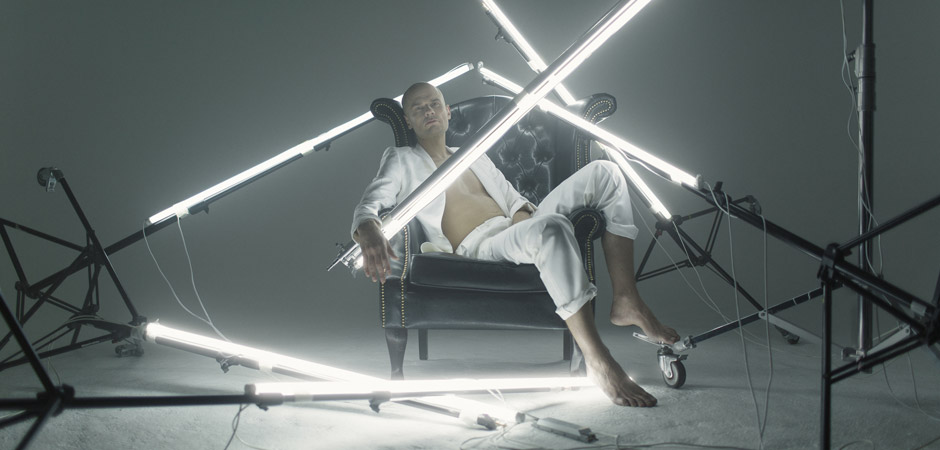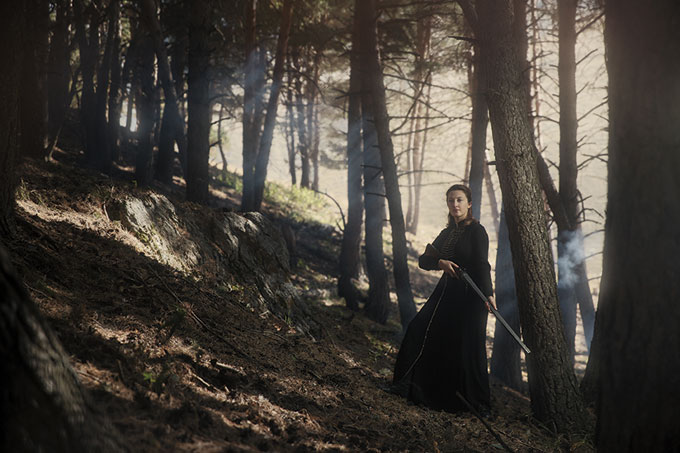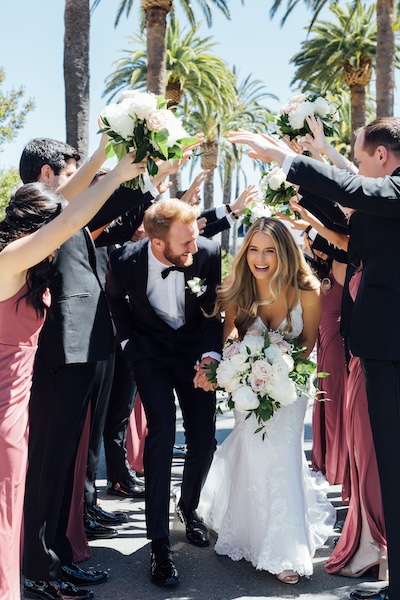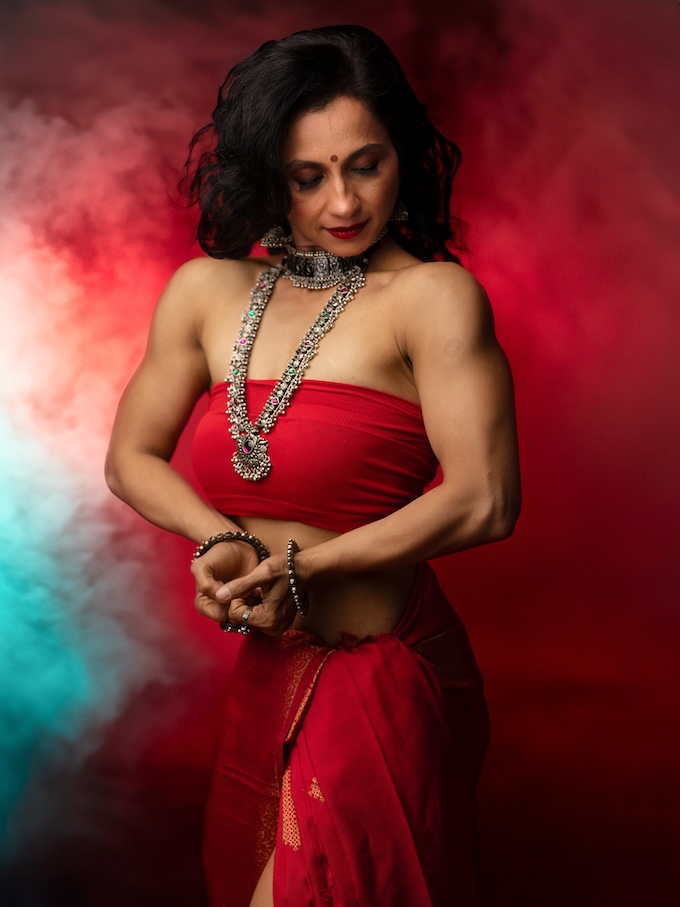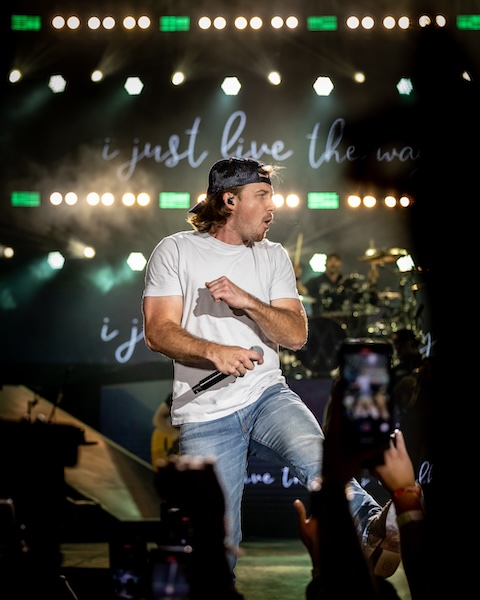Business + Marketing
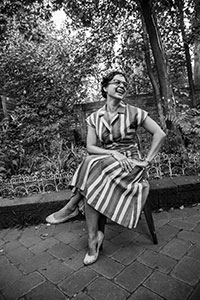
Catalina Kulczar
Location: New York, NY
Clients: DIY Magazine, Google, Brooklyn Academy of Music, Warby Parker, National Geographic
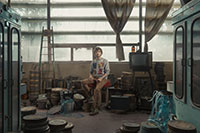
Andrew Kovalev
Location: Paris, France/Tbilisi, Georgia
Clients: Le Monde, Forbes, The Sunday Times, Nike, TELE2
Your Approach On Set
Catalina Kulczar: At first my work was all over the place: portraits, conferences, concerts, editorial, headshots, products—anything that came my way. I’m finally at a point where I don’t have to say yes to everything and can continue to focus on the work I love, which is animated, playful and honest portraits. I bring a pile of energy to every shoot and a contagious—some might even say loud—laugh. On a recent shoot, someone nicknamed me “Sunny Side Up.” That pretty much sums up my spirit on set.
Andrew Kovalev: Paying attention to details is instrumental to my approach. I invest a lot of time in pre-production—location scouting, casting, set design, styling. I try to over-deliver in that stage because it means smoother results. Just as words create structure, composition, mood, tonality and in the end, convey the main message of a story, so do images. What fascinates me most in the genre of portraits is this storytelling aspect. To me, portrait photography is a lot like literature. I’m Russian—I love literature.
Getting Your First Clients
CK: When I moved to New York in 2009, I started at zero. My first client was Magnolia Bakery, and I landed them because I bartered to use their space for a shoot in exchange for photography. My next client was the trends and technology website PSFK. They tweeted that they needed content creators and when I met with them, I offered to do their staff portraits for free. Warby Parker, who was my client for three years, was a result of meeting with their creative director thanks to an intro by my next-door neighbor, which lead to a trial shoot. Today, I’ve had the privilege to photograph cultural icons like Milton Glaser, David Byrne (pg. 39) and Annie Clark. Mind you, the hustle never stops when you’re working for yourself. This is a competitive industry. Hustle is requisite.
AK: The key is to have a portfolio before you go looking for your first clients. At some point in my growth as a hobby photographer, I had this ambition of being published in a magazine. I started talking to people I knew who might have connections in publishing. Finally, I got lucky: some friends of friends knew of an open call for emerging photographers for a famous magazine that gave me a test assignment. I was to choose one of four different subjects and produce a story about it in one week. I was so afraid of missing my chance that I shot all four. In a couple of weeks, they called with what would be my first magazine assignment.
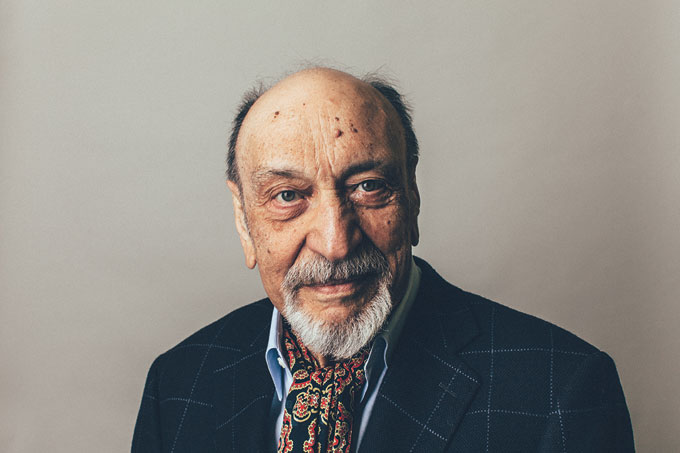
Milton Glaser is one of the cultural icons Kulczar has had the privilege of photographing. Photo © Catalina Kulczar
Planting Roots In Your City
CK: I learned that to succeed in this industry—and New York City is very challenging—it always helps to know someone who can do an email introduction versus a cold email or cold call. After I did David Byrne’s portrait the first time in 2012, I had grandiose dreams of my phone ringing off the hook for commissioned work. Yeah, not so much. I was blown away at how difficult it was to be taken seriously even after photographing someone as influential and well-known as David. The lesson is that hustle and grind never stop if you want to expand your work and grow your clients.
AK: Many years after my first editorial, I started building a full-time career in a completely new country: France. I began with sending out 50 or 60 introduction emails to some major Parisian magazines. Nobody replied. Not yes, not no—just silence. One day, I was on a lecture, and during the break I showed the curator my portfolio. She gave me positive feedback and some useful comments. I told her about my search and she shared her friend’s email address, a photo editor at a French business magazine. She also promised to make a call and introduce me. I got myself my first meeting and, a few weeks after, my first assignment. Then a second. And when others saw me working for French clients, they started replying. They needed proof that someone in Paris was already trusting me and getting good results. My third assignment from a French magazine was a cover shoot.
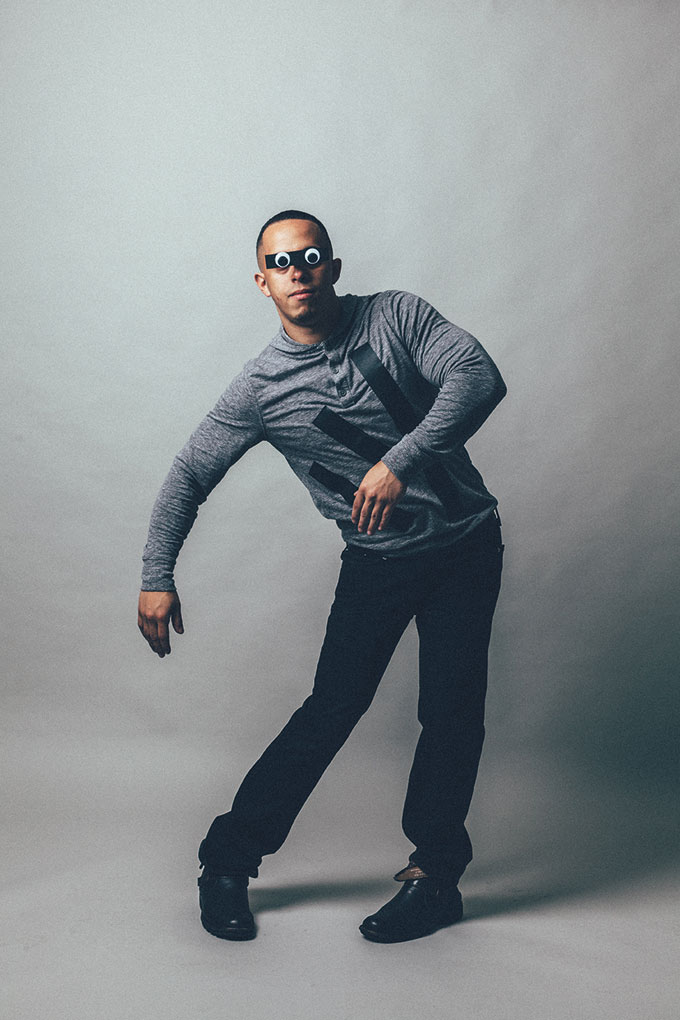
Designer Juan Carlos Pagan was photographed for a personal portrait series, which can be used for self promotion. Photo © Catalina Kulczar
Staying Relevant And Moving Forward
CK: I have a personal approach to gaining new business, and that helps with relatability, but word-of-mouth referrals of past and current clients has helped me become hireable. This year is the first time in my career that I’ve aggressively marketed my work with The New Order, my portrait series of women in technology. I mailed a promo poster to art buyers, creative directors and art directors to let them know that I love what they’re doing and that I want to work with them. Self-promo pieces can be a gamble, but if your intentions are right and you are patient, the right people will come along and want to work with you.
AK: In these recent years, I started producing personal projects that are more and more complex. I started collaborating a lot with stylists, costume and set designers, makeup artists, actors, and I’m taking interns. With my personal work becoming more elaborate, this is where I am heading in terms of commercial assignments. You have to treat your personal work as an important self-promotional tool—then people will want you to apply that unique style of yours to their needs.

Billy Kidd
Location: New York, NY
Exhibitions: Masters & Pelavin, BSAC NY, 10 Corso Como, Clic Gallery, Palazo Morando
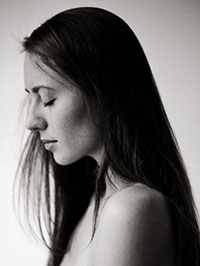
Agata Serge
Location: Lodz, Poland
Exhibitions: FVF 2017, Galeria ZPAF, Lodz Film School, Art Inkubator, Drukarnia
Evolving Your Style And Building A Portfolio
Billy Kidd: Coming from a family of artists who never pursued their art, my mother pushed me to take a photo class. It would have only been a hobby if the bank I was working for at the time hadn’t laid off several employees. This was a scary moment for me. I had a child to take care of and almost no savings. I went to class after losing my job, and my photo teacher, Jared Platt, offered to introduce me to a photographer in Phoenix who needed a new assistant and digital tech. He hired me, taught me about the EQ and how to run a business.
In 2009, I moved to New York after selling everything I owned except for my camera, iMac and desk. I spent every day contacting and meeting model agents to convince them to let me shoot their “new faces.” A friend of mine who was at Major Model Management let me shoot some of their girls. Another agent liked what I shot, so he let me shoot some of his girls, and it all snow-balled into agents I never met contacting me. I had to use what was available to me, which was a series of windows and a wall. This all led to my style—most of what I shoot is natural or ambient light.
Agata Serge: For years, I thought of photography as my hobby, and in a way, I think this was fortunate. Rather than spending time and energy approaching editors and advertisers, I focused on developing my skills and slowly putting together a portfolio. As my shots improved, they began to get recognized by some who reached out to collaborate and others who introduced me to potential clients.
“You can never be too prepared” is a statement I’ve heard a lot from more experienced photographers, and to an extent, I agree. I’ve always made sure to do my research and prepare thoroughly before shoots. At the same time, I feel that it’s important not to plan out every last shot in advance. I always try to leave some extra time and rolls of film for moments of improvisation. I feel free to experiment and try things that may not work, and that’s how my personal style has evolved.

“I found so much joy in preparing for and attending the exhibition by Canon during FVF in Lodz this past April,” Serge says. “Canon was kind enough to prepare beautiful 100 x 70-centimeter, high-quality prints that surprised even me. I was thrilled by the number of people who attended and still feel giddy when I think about it today.” Photos © Agate Serge
Getting Into A Gallery
BK: The biggest step is having a good idea and executing it well. Beyond that, it’s important to know the galleries you want to show in. Do your research on their past exhibitions to make sure your style fits them before you reach out.
AS: Contests, both in print magazines and online, are a great way for a photographer who may not have any contacts in the industry to gain some exposure. I knew absolutely no one when I started. The validation that comes with winning a contest is nice, but even more helpful is that many publications grant the winner a spot in a group exhibition. In 2013, I organized an individual exhibition for myself, invited every influencer I could think of and was pleasantly surprised when many attended.
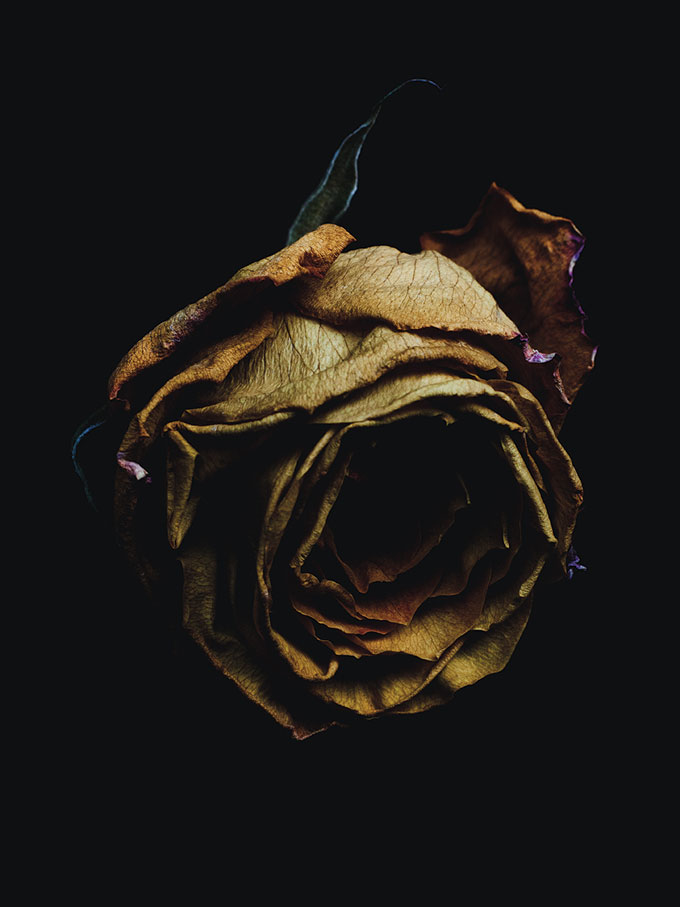
“My last show, ‘Transience,’ is my favorite,” Kidd says. “It’s a series of wilting flowers and ‘flawed’ nudes to create a discussion about age, what beauty is and the perception that youth is beauty. The wilting flowers represented age, and their vibrant colors and abstracted shapes represented their beauty.” Photos © Billy Kidd
Executing A Show
BK: Cost is a huge step. It’s not cheap to print your work well, and framing and glazing is even more expensive. For the first show my wife and I collaborated on, we used Kickstarter to raise enough funds to print everything, including a book designed by Buero New York for the show.
AS: The biggest challenge I face at each exhibition is selecting the images to be shown. For me, this is an emotional process. I grow attached to each photograph and am hesitant to let them out into the world. I thought that this attachment might fade with time, but after six years, I still feel it as strongly as ever. For next spring’s exhibition, I plan to work with a curator, who will hopefully help me gain some objectivity and distance when considering my work.
Dear My Younger Self (Tips From the Other Side)
Catalina Kulczar: Success is a marathon, not a sprint. I was naive to think that upon moving to New York City I was going to “make it big” by getting a rep and landing huge advertising campaigns as I quickly became an in-demand photographer. Ha! I would tell any photographers starting out to be extremely patient and even more persistent. When someone shows interest in you, get their contact information and politely follow up with them. And when they throw an opportunity your way, kill it.
Andrew Kovalev: Have a story prepared for a shoot. Think of it as a movie script. Be the director for your models, treat them as your actors and explain their role in your story to them. Shoot like a director of photography. In my experience, this little game helps people relax, become more playful and be willing to open up and show their emotions on set.
Agata Serge: Don’t let the no’s you hear get in the way of pursuing your dreams. In our world, failure is inevitable, whether in the form of a contest loss or a business proposition rejected. But if I had let failures convince me to give up, I’d never have made it as far as I have. So, this may be cliché, but the most important thing is to persevere in spite of failure.
Related: How To Win At Social Media Advertising
The Social Media Cheat Sheet To Facebook, Instagram, Twitter and Pinterest

